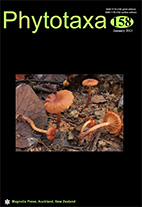Abstract
A phylogenetic analysis based on nuclear ITS and plastid trnK intron sequences confirms that Dahlgrenodendron, Sinopora, Triadodaphne, and Yasunia are members of the Cryptocarya group, as expected from morphology. Dahlgrenodendron from South Africa is sister to Aspidostemon from Madagascar. Triadodaphne inaequitepala is nested within Endiandra (both from Australasia), and Yasunia from South America is nested among South American Beilschmiedia species. Sinopora is a member of the Beilschmiedia clade, but its precise position is still uncertain. Among large genera of the group, Cryptocarya is clearly monophyletic, and Endiandra appears to be as well, if T. inaequitepala is included. Beilschmiedia is paraphyletic with respect to (at least) Potameia and Yasunia. Most well-supported clades within genera are geographically homogeneous, except a clade including the Chilean Cryptocarya alba and two New Caledonian species. Both Beilschmiedia and Cryptocarya have reached the Americas more than once. Four-locular anthers are plesiomorphic in the Cryptocarya group; two-locular anthers have arisen by fusion of the two pollen sacs of a theca. In the plesiomorphic fruit type, the ovary is completely enclosed in receptacular tissue; a superior fruit, seated free on its pedicel, is a synapomorphy of the Beilschmiedia clade.

